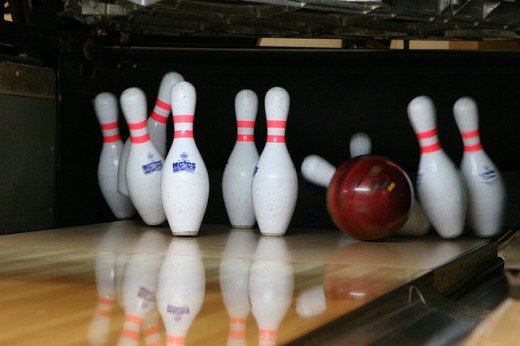BOWLING FOR DUMMIES CHEAT SHEET
October 26, 2018History of Bowling
November 8, 2018
Long story short, bowling might not be the next exercise fad, but it does have a vast array of health benefits:
- 1-hour of bowling can burn anywhere from 219 to 327 calories depending on how much you weigh (Mayo Clinic)
- In comparison, that’s more calories burned than walking 2 miles in 1 hour
- Bowling requires a short burst of physical activity when throwing the ball
- It can also help speed up your metabolism through consistent movement while playing the game
- The BPAA says bowlers use 134 muscles during a game.
- The repetitive swinging, flexing, bending and stretching also helps tone muscle groups in your arms, chest, back and legs
- Bowlers throw the ball up to 21 times per game. Bowling balls weigh from 6 to 16 pounds. How much do your barbells weigh at the gym?
- Any type of exercise, including bowling, lowers your risk of stroke, heart attack and diabetes
- It also lowers cholesterol and blood pressure while improving circulation
- Are we saying that if you bowl, you’ll instantly lose weight? No. But it can be considered a moderate exercise
- And as with any exercise, be sure to stretch and choose a ball weight that you can handle
- Our physical therapists say bowling is an ideal sport for social benefits. Bowlers often spend time with family and friends, which can decrease stress, loneliness and depression
- Bowling is a wonderful sport for all ages, and is a low-risk activity for injuries
- The BPAA says the median age of a bowler is 36. The oldest person to bowl a perfect game of 300 was 89, and more than 18 million kids between 6 to 17 bowl every year
- Whether you play in a league or bowl with the family, the sport allows people (at any age) to interact with friends and family to reduce stress
- Studies have shown that people who have strong and happy relationships with family, friends and their community have fewer health problems and live longer





